#226: Tulip Morels
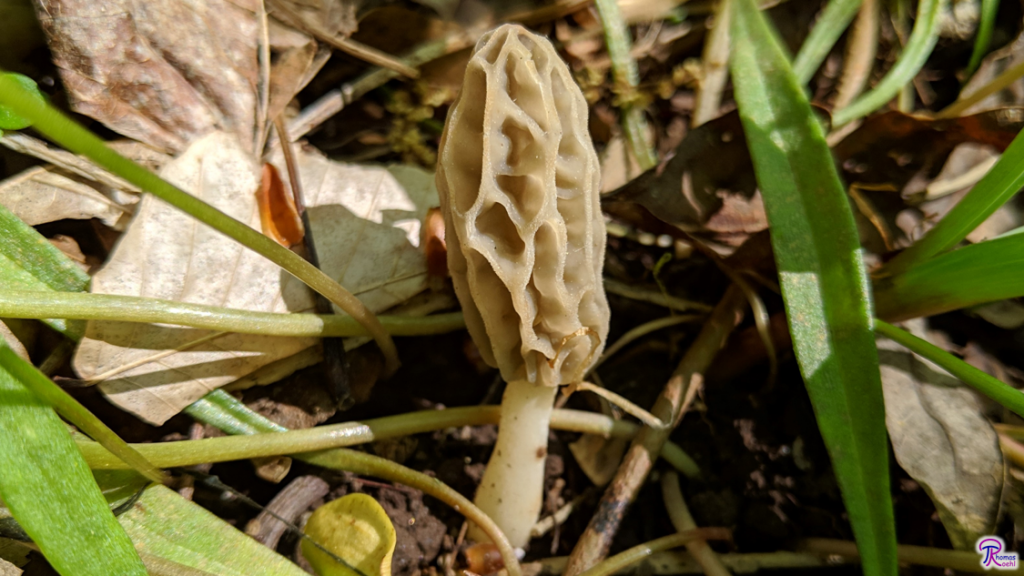
Eastern North America has two general forms of yellow morels: large and small. Large morels (see FFF#086) typically grow up to 22cm when fully grown, whereas the smaller versions grow up to only 12.5cm tall. But size isn’t the only difference; the smaller yellow morels tend to be thinner in relation to their height and have long vertical pits. The larger morels typically look stouter and have more random pits. Small morels are commonly known as “Tulip Morels” because of their association with tulip trees. Tulip morels comprise two species that are nearly indistinguishable: Morchella diminutiva and M. sceptriformis.1–4
Description
How do you describe a morel? There’s nothing that looks quite like a morel, so you have to get creative. The top part looks kind of like a honeycomb, sea sponge, old sweetgum ball, crumpled paper, and so on. Basically, it’s a structure with interconnecting blunt ridges and irregularly-shaped wrinkly pits. Perhaps it would just be better to look at a picture. Anyway, the upper section (head) sits atop a stipe that is fairly uniform but often features grooves or faint lobes, especially toward the base. The overall impression is something like a honeycomb on a pedestal or perhaps a half-melted “Kitchen Scrubber of the Year” trophy.
Tulip Morels, like all true morels, have this classic indescribable shape. Like the rest of the true morels, Tulip Morels are hollow: they have a single hollow chamber that runs from the base of the stipe to the tip of the head. What separates them from the other morels are their size, coloration, and arrangement of ridges and pits. Tulip Morels are some of the smallest morels, typically growing 3-12.5cm tall and 1-3.5cm wide. The ridges on their heads start out whitish and darken to yellowish or tan when mature and may darken further to orangish-brown when very old. Ridges primarily run up and down, frequently traveling from the tip to the base of the head. Shorter ridges run horizontally at irregular intervals to connect the vertical ridges. The ridges join directly to the stipe. The pits of Tulip Morels start out greyish but become yellow to tan – nearly the same color as the ridges – when mature. Some people call young yellow morels “grey morels” because of the grey color of pits.1–4
Both species of Tulip Morels share these features, although there are some subtle differences between the two. For one, M. diminutiva tends to have a more conical head, while the head of M. sceptriformis is typically more egg-shaped. Additionally, M. diminutiva is a little bit smaller than M. sceptriformis: the largest M. diminutiva mushroom grows 10cm tall, while the largest M. sceptriformis mushroom maxes out at 12.5cm. Although notable, it’s impossible to reliably separate the mushrooms based on these features alone. In order to accurately differentiate between the two, you’ll need a microscope: M. diminutiva has lots of somewhat spindle-shaped cells jutting out of the ridges that are easy to find but M. sceptriformis has only a few cylindrical to nearly spindle-shaped cells on its ridges.1–4
Ecology
Tulip Morels grow in forests east of the Great Plains, primarily under tulip trees. M. diminutiva has a slightly broader host range: it can also associate with ash, hickory, apple, and some other broadleaf trees. However, mature tulip tree forests are still the best places to find either species. Tulip Morels fruit in the spring, typically from mid-April to mid-May, although timing changes based on latitude, altitude, and weather. Nobody is quite sure what role Tulip Morels fill in the ecosystem, but they seem to be able to form mycorrhizas as well as carry out decomposition.1–4
Similar Species
The most difficult species to distinguish from Tulip Morels is Morchella americana (FFF#086). When young, all three species can be very similar in color, shape, and size. The best way to differentiate M. americana is by looking at the arrangement of the ridges. M. americana’s ridges are not arranged in any particular order, while Tulip Morels have ridges that primarily run up and down.1–4
Black Morels (in Eastern North America, see FFF#140) and Half-Free Morels (FFF#211) can be easily distinguished by their darker ridges and by the fact that the ridges do not directly connect to the stipe.5
False morels (FFF#034) are typically brownish and have less well-defined ridges. These should be easy to distinguish, but if you’re in doubt, cut the mushroom in half: false morels are solid or chambered on the inside, while true morels are hollow.
Verpas (FFF#067) have ridges that are very similar to the ones found on morels. However, the head of a verpa hangs down over the stipe like a skirt and the stipe is filled with cottony fibers. Cut one in half and you can spot the differences immediately.5
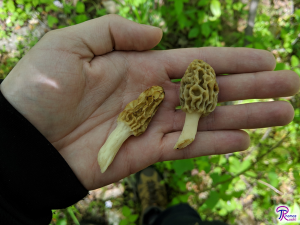
Edibility
Like all morels, Tulip Morels are edible and delicious when cooked. Raw morels will cause gastrointestinal distress, so always cook your morels before eating them.1,2 Morels are typically best in a cream sauce, but there are lots of good ways to prepare them. I like to dry morels before using them, especially the Tulip Morels. There are two reasons for this. First, the flavor of morels improves after being dried. Second, I usually don’t find enough Tulip Morels at one time to make a meal. So, I dry them, put them in a jar, and cook them up all at once when the jar gets full.
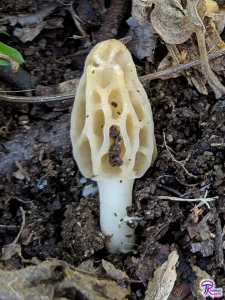
Taxonomy
M. diminutiva and M. sceptriformis are close relatives that are aligned with the rest of the true morels in the genus Morchella. Originally, both of these species went under the name M. deliciosa, but mycologists determined that name applied only to European species. Some field guides may use the name M. virginiana instead of M. sceptriformis, but they refer to the same species. By the rules of fungal taxonomy, M. sceptriformis is the correct name. Once again, I have to learn a new name for a mushroom because I was first introduced to the Tulip Morels under the name M. virginiana. On the positive side, North American morel taxonomy is pretty well worked out at this point. Expect a couple more name changes in the group due to synonymy and nomenclature rules, but the names that are finalized over the next few years should last a long time.1 I hope.
| Kingdom | Fungi |
| Subkingdom | Dikarya |
| Division | Ascomycota |
| Subdivision | Pezizomycotina |
| Class | Pezizomycetes |
| Subclass | Pezizomycetidae |
| Order | Pezizales |
| Family | Morchellaceae |
| Genus | Morchella |
| Species | Morchella diminutiva M. Kuo, Dewsbury, Moncalvo & S.L. Stephenson6 Morchella sceptriformis Clowez & C. Matherly7 |
This post is not part of a key and therefore does not contain enough information to positively identify any mushroom. When collecting for the table, always use a local field guide to identify your mushrooms down to species. If you need a quality, free field guide to North American mushrooms, I recommend Michael Kuo’s MushroomExpert.com. Remember: when in doubt, throw it out!
See Further:
http://www.mushroomexpert.com/morchella_diminutiva.html http://www.mushroomexpert.com/morchella_virginiana.html http://www.mushroomexpert.com/morchellaceae.htmlCitations
- Beug, M. W., Bessette, A. & Bessette, A. R. Ascomycete fungi of North America: a mushroom reference guide. (2014).
- Sturgeon, W. Appalachian mushrooms: a field guide. (2018).
- Kuo, M. Morchella diminutiva. MushroomExpert.Com (2012). Available at: http://www.mushroomexpert.com/morchella_diminutiva.html. (Accessed: 26th April 2019)
- Kuo, M. Morchella virginiana. MushroomExpert.Com (2012). Available at: http://www.mushroomexpert.com/morchella_virginiana.html. (Accessed: 26th April 2019)
- Kuo, M. The Morchellaceae: True Morels and Verpas. MushroomExpert.Com (2012). Available at: http://www.mushroomexpert.com/morchellaceae.html. (Accessed: 27th April 2019)
- Morchella diminutiva. Mycobank Available at: http://www.mycobank.org/name/Morchella%20diminutiva&Lang=Eng. (Accessed: 26th April 2019)
- Morchella sceptriformis. Mycobank Available at: http://www.mycobank.org/name/Morchella%20sceptriformis&Lang=Eng. (Accessed: 26th April 2019)

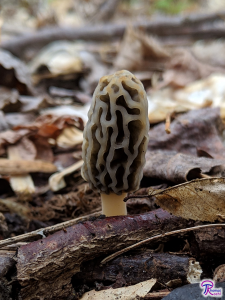
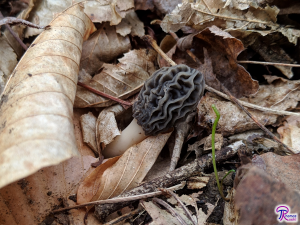
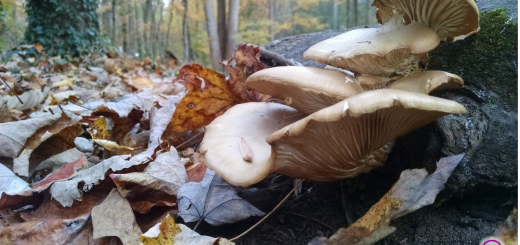
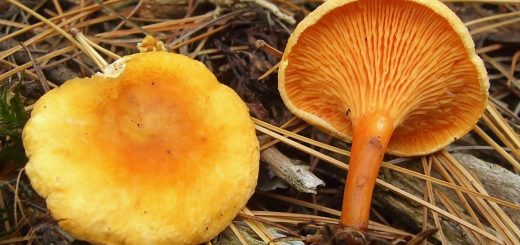
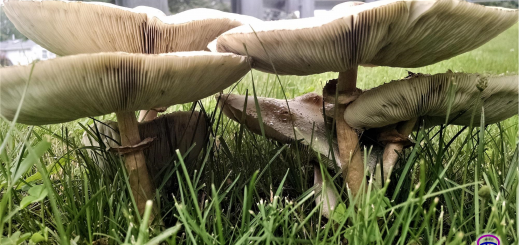





![#011: Characteristics of Kingdom Fungi [Archived]](https://www.fungusfactfriday.com/wp-content/themes/hueman/assets/front/img/thumb-small-empty.png)

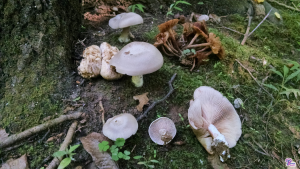
1 Response
[…] east of the Rocky Mountains, although it is not as common as yellow morels (see FFF#086 and FFF#226). There are a handful of black morel species, but you can easily identify M. angusticeps […]